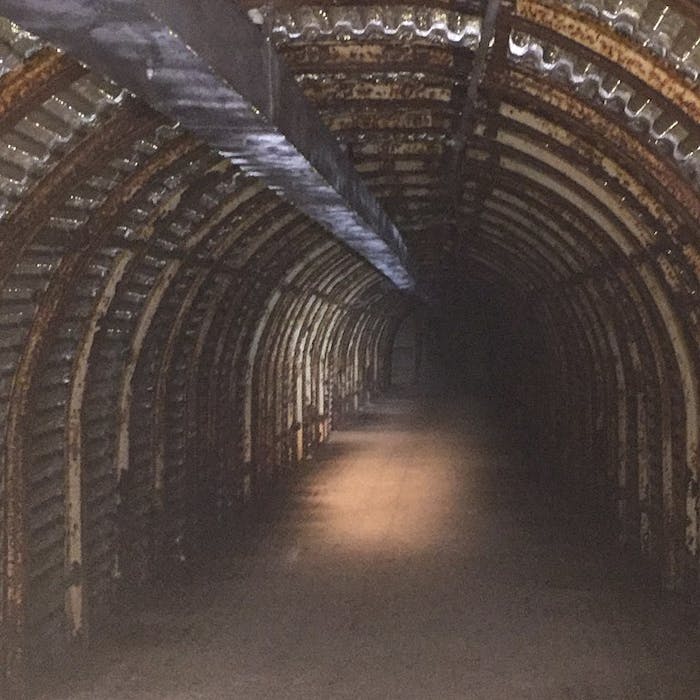
Fan Bay Tunnels - deep into the White Cliffs of Dover
In 2015, the National Trust opened the Fan Bay Deep Shelter to the public for the first time. These are Churchill’s wartime tunnels under white cliffs of Dover, constructed in 1940/41 as accommodation for the gun battery above.
A labyrinth of tunnels, the Fan Bay Deep Shelter is reached by 125 steps down into the bowels of the white cliffs of Dover. It was built on Winston Churchill’s orders but abandoned and vandalised since the end of the second world war .
The National Trust was astonished to discover in 2012 it had inadvertently acquired the historic property, buried 23m below the stretch of cliffs overlooking the port which the charity bought through a £1.2m public appeal.
The tunnels, carved out of the chalk in just 100 days after a visit by Churchill, lie deeper than the nearby South Foreland lighthouse is high. Despite being stripped of metal sold off for salvage after the war, and suffering vandalism, most of it is in remarkably good condition, preserving graffiti including names of the men who dug the tunnels and those who later sheltered there, within earshot of the artillery on the French and Belgian coast.
A book stashed for safekeeping on top of an air duct more than 70 years ago was also found: after conservation work it was revealed as a naval adventure story published in 1903, Shadow on the Quarter Deck by a Major W P Drury.
Other finds include quantities of homemade wire hooks, a Unity Pools football coupon for February 20 1943, British and American bullets, and a needle still with a trail of khaki wool tucked into the wall at the height of a top bunk bed.
The shelter was built along with a gun battery sited just 21-and-a-half miles from France after Churchill visited Dover in July 1940 and was enraged to watch through binoculars enemy shipping moving freely in the English Channel.
By 10th December the battery and still incomplete shelter were garrisoned by four officers and 118 men from the 203rd Coast Battery of the Royal Artillery relocated from Falmouth, and personally inspected by Churchill the following June.
The complex, which originally included five large chambers with storage space for rifles ominously sited between the bunks, a hospital and a secure store, a generator, and toilets and washrooms near the first world war sound mirrors, was carved out of the chalk by the Royal Engineers between November 20th and February 28th.
Part of the complex, regarded as an eyesore and an attraction to vandals, was deliberately destroyed in the 1970s, when the original three entrance tunnels were collapsed and filled in with rubble.
They were rediscovered when a small hole in the ground was spotted, during work by the National Trust on the site. Experts from the Kent Underground Research Group burrowed into it, and found most of the tunnels had survived.
Dozens of volunteers came in to help clear the tunnels, removing more than 100 tonnes of spoil by hand, including 30 tonnes from the entrance staircase alone. They also carried in 80 railway sleepers to repair the tunnel supports.
Further reading
Links to external websites are not maintained by Bite Sized Britain. They are provided to give users access to additional information. Bite Sized Britain is not responsible for the content of these external websites.
